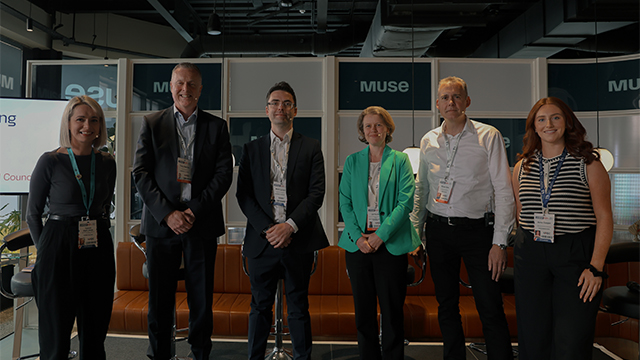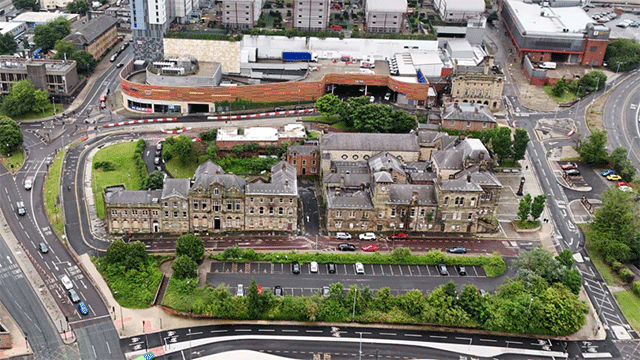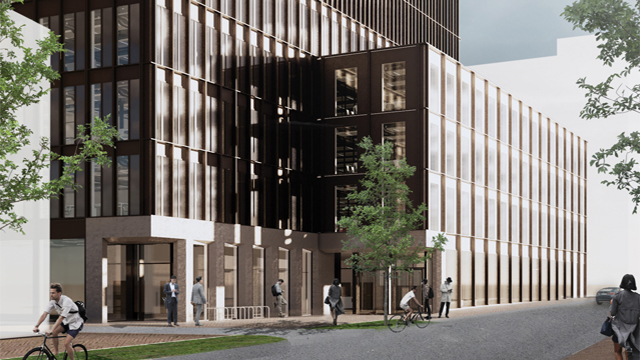WATCH Negotiating a lease can be an adversarial experience. So how can green clauses, which require collaboration and mutual understanding, be made to work?
“Traditionally it is a case of ‘where can I defer cost from myself and put it on the other party as much as possible’,” says CBRE’s managing director of sustainability consultancy, Kaela Fenn-Smith.
As a result, good intentions can fall victim to cost mitigation.
“Quite often green clauses in the past have been put in the lease by the landlord, and then struck out by the occupier’s lawyer,” Fenn-Smith adds. And she should know. As the former head of commercial at Landsec, it was her duty to mitigate the costs of the landlord. Now at CBRE she is just as likely to be advocating for the tenant.
Whether the clause stays in or not is a game of who’s got the leverage. “Who is going to push hardest to keep it in or not keep it in? And is it a deal breaker?” she says.
The panel
- Melanie Williams, head of real estate sector, DWF
- Kaela Fenn-Smith, Managing Director, ESG Consultancy & Sustainability Services, CBRE
- Sophie Goddard, director of sustainabililty, Canary Wharf Group
As a result, says Melanie Williams, partner at listed law firm DWF, “green clauses are either absent at the moment, or have a really basic level of provision, or a level of provision that is just voluntary”.
But, with the need to achieve net zero being not only desirable but necessary to avoid stranded assets and reputational damage – not to mention the impending legal requirements – that has to change.
“We need to move towards a collaborative mindset,” says Williams.
But even if the landlord and occupier can collaborate, and agree to including green clauses, that is just the beginning of the process, says Canary Wharf’s director of sustainability, Sophie Goddard.
“If we want to move this agenda forwards, we really need to get into the detail of explaining why they are there and having a collaborative approach to ensuring both parties are supported,” she says.
Goddard says both parties need to be persuaded to think less about the nature of the lease and more about what comes afterwards. “We have to think of a green lease as a tool, not an outcome,” she says.
That requires an enormous amount of flexibility and openness. But ensuring that is not going to be easy – partly because of the very nature of leases.
“A lease is a document that we transact today and is meant to regulate the parties’ interests for the next 10, 20, 25 years,” Williams notes. But the aspects covered by green clauses are changing far more rapidly than that. They require flexibility. The technology changes, the best practise changes, the legal requirements change. “You can’t legislate for them in a lease today.”
Added to this is the fact that, while ESG is “derailing the terms” of 25-year leases, shorter leases also present a problem. “If you are taking a five-year or a 10-year lease, you are not going to want to be paying for something that is not going to give you a return,” Williams says.
Again, it comes back to costs and incentives.
Virtue and value
A recent survey conducted by DWF revealed that two out of five respondents still feel there was a negative commercial impact on them in adopting environmental changes. “That is still quite a large percentage who don’t see it as an investment,” says Williams.
That’s where we need to educate, says Goddard. “We have to accept the reality that sometimes we have to invest now to save later. Or to support the reputation of a company.”
While some are lagging behind, most occupiers are seeing the virtue and value of the green clauses.
“The difference is phenomenal,” says Goddard. “Before it was a challenge to have green leases in the first place. Now we are asking: how do we get them right? That is a big step forward.”
There is a growing recognition that it is “the right thing to do”, she says.
“It’s the only thing to do,” Williams adds with a grim smile, “or we’ll all be living underground.”
But even if the will is there, the practicalities still make the inclusion of worthwhile green clauses difficult.
“In a typical lease transaction you want to button everything down,” adds Fenn-Smith. That is simply not possible with green clauses, unless you intend to render them meaningless.
The ability for the terms to adapt to suit changing practises is essential. “That’s the only way to make sure green leases aren’t just a bit of paper, but something that helps move the agenda forwards,” says Goddard.
And the result is taking us beyond traditional landlord and tenant relationships, says Fenn-Smith. “We are moving into a place we have never been before.”
The question, then, is what is being done from a legal point of view to reconcile these two seemingly contradictory agendas?
“I can answer that in about two seconds,” says Williams. “Not nearly enough.”
For her, though, there is another solution. “Maybe putting all of the green clauses and requirements into the box of a lease is not the right approach.” She sees potential in the landlord creating a building plan, which contains all of the green clauses, sustainability targets and proposed interventions. All parties would have to sign up to it, but it can be adapted and updated when it needs to be, not just at the renewal or assignment of a lease.
“Maybe that’s the way to move it forward rather than sticking it into a fixed lease point that doesn’t really work.”
Balancing act
Whether green clauses belong in a lease or not, they need to be somewhere. Regulations already in the pipeline will require all buildings to reach minimum standards by 2035, and landlords won’t be paying for that on their own. But getting to that point requires collaboration.
“It is important, when we talk about green leasing, that we start to talk about collaboration, and how we find win-win for both parties,” says Fenn-Smith. The conversation needs to move on from who pays for what. “We all have to invest, but we all have to invest in something that is slightly unknown. We are not 100% certain of what the outcome will be.”
“It is a balance,” adds Goddard. “We have to recognise what we don’t know and where we need to focus our efforts.”
But instead of allowing that uncertainty to halt progress in its tracks, we need to work harder to understand. And that requires a greater level of transparency from both owner and occupier. “We need to come together to collect the data,” Fenn-Smith adds. “And start implementing reductions and interventions together, and providing transparency to both parties so we can get to the right result as quickly as possible.”
And even though all we see at the moment are challenges, “there are opportunities,” reminds Williams.
To reap them we just have to be more collaborative. “Be open-minded, be brave, be a bit bold,” she says. “And where you are lost, reach out for help.”
To send feedback, e-mail piers.wehner@eg.co.uk or tweet @PiersWehner or @EGPropertyNews
In association with












